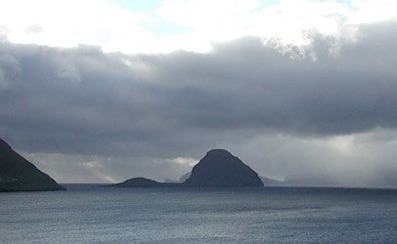My Faroe-Stamp’s collection


There are many ways of collecting stamps.
First, you can “collect stamps”... Then, THE STAMP is the great protagonist of the collection. One could then study it, collect it and own it from every point of view: all the issues of a country, every kind of perforation, paper, watermark. Every experiment in printing and color, every possible variation of centering, of positioning within the sheet, every mistake, more or less wanted. At this point, stamps can be new or second-hand, traveled, cancelled (on the first day!), and coupled, in quartets, in sheets, in booklets. On an envelope, on a “maximum”, if it is still in usage.
However, the stamp is one of the protagonists of mail and the same mail history can be what fascinates the collector. So, let us begin looking for prices, regulations, any documentation about “post paths”, from letters to postcards, from bookseller’s order forms to general delivery, from airmail to pneumatic mail, etc. Finally, “everything you always wanted to know on the PTT and nobody every told you”.
Of course, the limits are only in the fantasy of the collector, who can dedicate his attention to rubber stamps or cancellations, to air mail to post organization, to automatic stamps and to the “red ones” (that sometimes... are not red at all). Every object having something to do with mail is, somehow, “philatelically joinable” in one collection, everyone is worthy of an organizer.
Stamps (and the mail service) can turn into the expression of other interests, and so we have “thematic” collections: every “post object” concerning mushrooms, ships, cats and dogs, starships and aerostats, fishing and hunting. The stamp, the cancellation and the postcard become picture cards for the adults, object to own for the effigy, the drawing, the hinting.
We collect the images of what we love. We continue our passion also in organizers and catalogues.
And, finally, and in my experience, stamps and post objects become a pretext to know a country. Through the emissions one gets to know books, houses, and customs of a people. Stamps become a door to know another culture. PTT are not important anymore: philately disappears, and only curiosity remains.
The Faeroes are in the very North, where winters are long, cold and windy and summers are short, intense and waited for.
The Faeroes are in the very North, amidst the sea and far from the more comfortable routes.
The Faeroes are in the very North, one cannot simply travel near them, one can only decide to go there.
The Faeroes are in the very North, and there one can be serene, reading, talking, playing, sleeping, observing.
The Faeroes are in the very North, and I would love to go there with my woman. I would love to stay inside, holding her in my arms, and looking from the window at the sea, lightened by the white flying of the seagulls.




























1975
1976
1977
1978
1979
1980
1981
1982
1983
1984
1985
1986
1987
1988
1989
1990
1991
1992
1993
1994
1995
1996
1997
1998
1999
2000
2001
2002
2003
2004
2005
2006


2007
2008
Art & Artists
Geography
History
Postal history
Links
Contacts
Home










